Refine search
Actions for selected content:
146 results in Trends in Southeast Asia
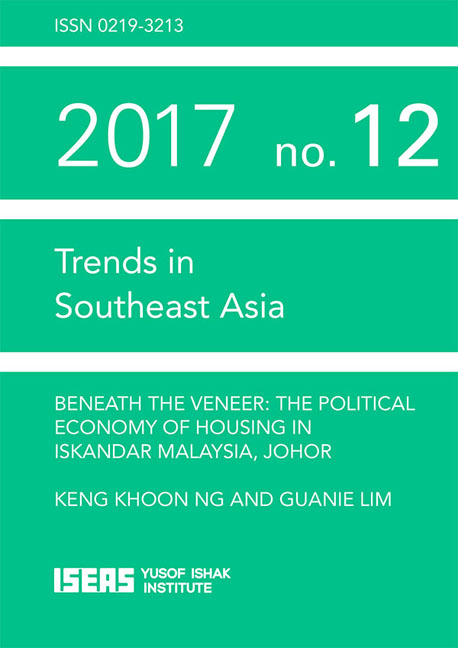
Beneath the Veneer
- The Political Economy of Housing in Iskandar Malaysia, Johor
-
- Published by:
- ISEAS–Yusof Ishak Institute
- Published online:
- 12 March 2019
- Print publication:
- 18 September 2017

Islam Nusantara as a Promising Response to Religious Intolerance and Radicalism
-
- Published by:
- ISEAS–Yusof Ishak Institute
- Published online:
- 12 March 2019
- Print publication:
- 07 December 2018

Malaysia's Electoral Process
- The Methods and Costs of Perpetuating UMNO Rule
-
- Published by:
- ISEAS–Yusof Ishak Institute
- Published online:
- 12 March 2019
- Print publication:
- 24 November 2017

The Peace Process and Civil-Military Relations during the NLD Administration's First Year
-
- Published by:
- ISEAS–Yusof Ishak Institute
- Published online:
- 12 March 2019
- Print publication:
- 13 October 2017
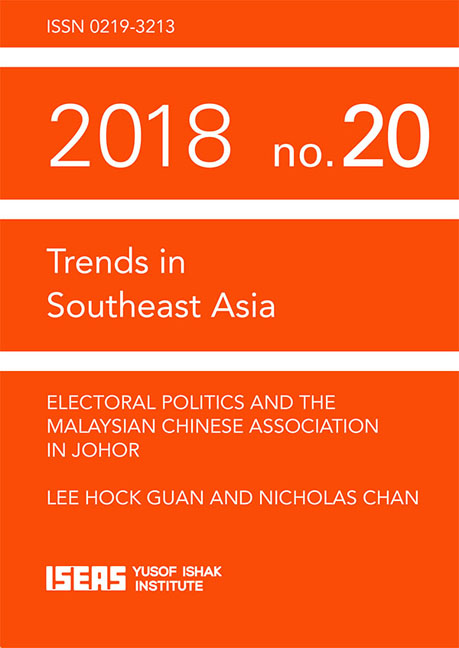
Electoral Politics and the Malaysian Chinese Association in Johor
-
- Published by:
- ISEAS–Yusof Ishak Institute
- Published online:
- 12 March 2019
- Print publication:
- 07 December 2018
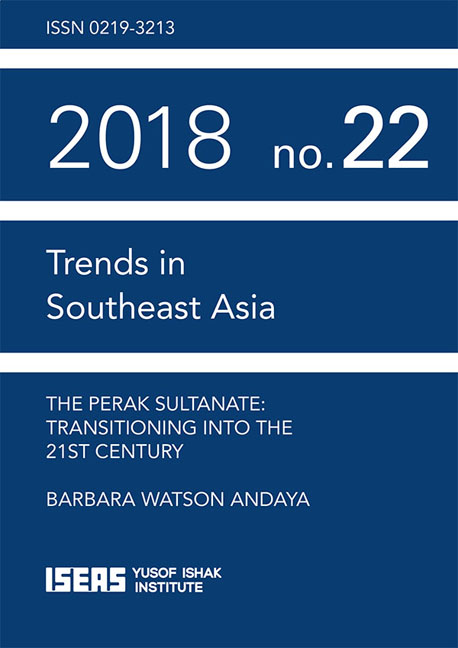
The Perak Sultanate
- Transitioning into the 21st Century
-
- Published by:
- ISEAS–Yusof Ishak Institute
- Published online:
- 12 March 2019
- Print publication:
- 15 December 2018

The Central Role of Thailand's Internal Security Operations Command in the Post-Counter-insurgency Period
-
- Published by:
- ISEAS–Yusof Ishak Institute
- Published online:
- 12 March 2019
- Print publication:
- 20 November 2017
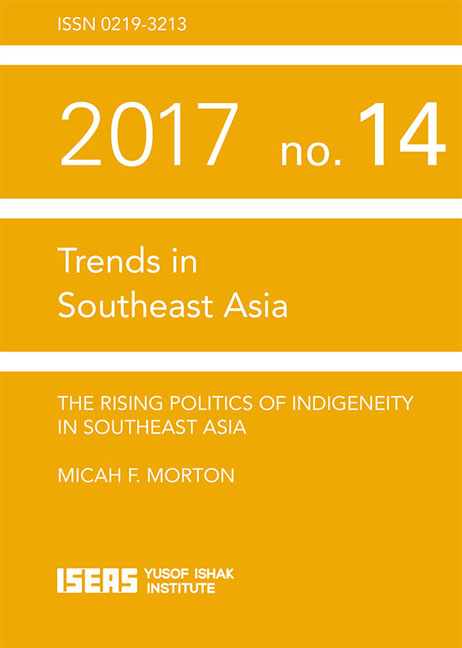
The Rising Politics of Indigeneity in Southeast Asia
-
- Published by:
- ISEAS–Yusof Ishak Institute
- Published online:
- 12 March 2019
- Print publication:
- 25 October 2017

Making Sense of the Election Results in Myanmar's Rakhine and Shan States
-
- Published by:
- ISEAS–Yusof Ishak Institute
- Published online:
- 09 March 2019
- Print publication:
- 04 February 2016

Learning Diplomacy
- Cambodia, Laos, Myanmar and Vietnam Diplomats in ASEAN
-
- Published by:
- ISEAS–Yusof Ishak Institute
- Published online:
- 09 March 2019
- Print publication:
- 14 October 2016

Is a New Entrepreneurial Generation Emerging in Indonesia?
-
- Published by:
- ISEAS–Yusof Ishak Institute
- Published online:
- 09 March 2019
- Print publication:
- 19 September 2016

New Context of Vietnam's National Security Challenges
-
- Published by:
- ISEAS–Yusof Ishak Institute
- Published online:
- 09 March 2019
- Print publication:
- 28 November 2016

Investigating the Popularity of Surabaya's Mayor Tri Rismaharini
-
- Published by:
- ISEAS–Yusof Ishak Institute
- Published online:
- 09 March 2019
- Print publication:
- 30 March 2017
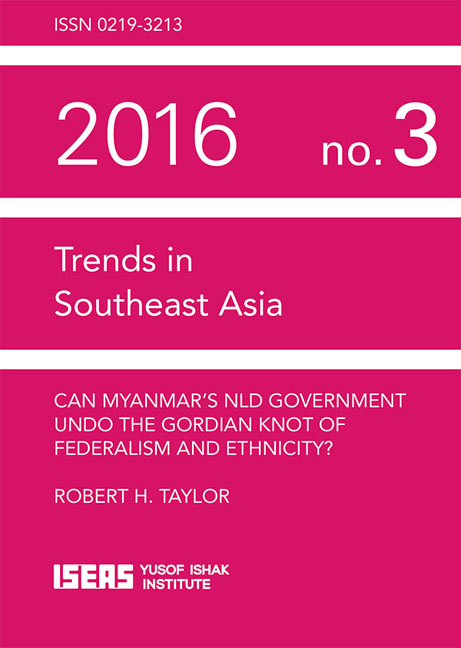
Can Myanmar's NLD Government Undo the Gordian Knot of Federalism and Ethnicity?
-
- Published by:
- ISEAS–Yusof Ishak Institute
- Published online:
- 09 March 2019
- Print publication:
- 08 April 2016
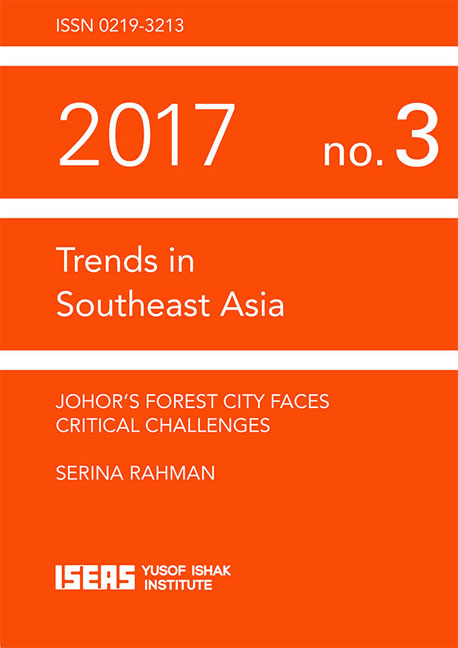
Johor's Forest City Faces Critical Challenges
-
- Published by:
- ISEAS–Yusof Ishak Institute
- Published online:
- 09 March 2019
- Print publication:
- 16 May 2017
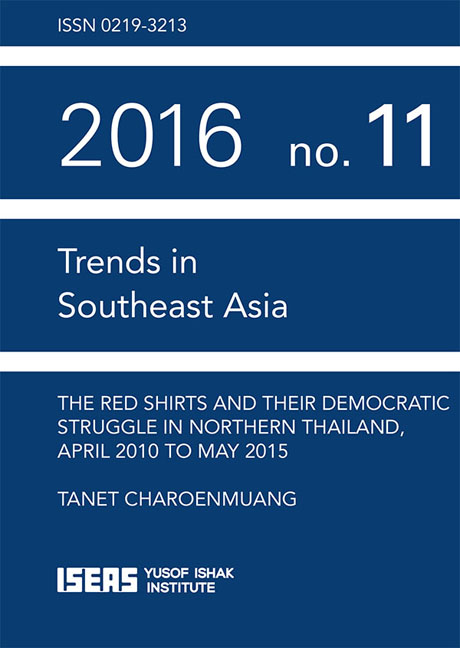
The Red Shirts and Their Democratic Struggle in Northern Thailand, April 2010 to May 2015
-
- Published by:
- ISEAS–Yusof Ishak Institute
- Published online:
- 09 March 2019
- Print publication:
- 10 August 2016

The Geopolitics of Xi Jinping's Chinese Dream
- Problems and Prospects
-
- Published by:
- ISEAS–Yusof Ishak Institute
- Published online:
- 09 March 2019
- Print publication:
- 07 November 2016
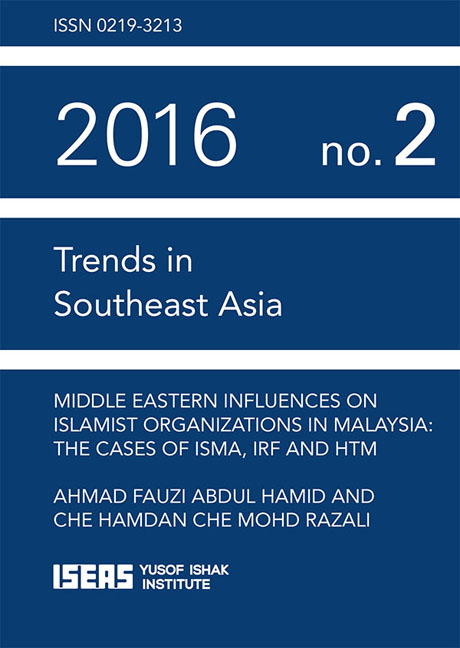
Middle Eastern Influences on Islamist Organizations in Malaysia
- The Cases of ISMA, IRF and HTM
-
- Published by:
- ISEAS–Yusof Ishak Institute
- Published online:
- 09 March 2019
- Print publication:
- 29 February 2016

The State of Local Politics in Indonesia
- Survey Evidence from Three Cities
-
- Published by:
- ISEAS–Yusof Ishak Institute
- Published online:
- 09 March 2019
- Print publication:
- 01 June 2016

Myanmar's Foreign Policy under President U Thein Sein
- Non-aligned and Diversified
-
- Published by:
- ISEAS–Yusof Ishak Institute
- Published online:
- 09 March 2019
- Print publication:
- 27 April 2016
